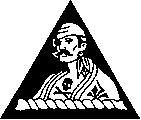

|
|---|
The capture of Saipan and Tinian began on June 15, 1944 with the Marine assault on the Japanese stronghold at Saipan. Under the League of Nations charter, the Japanese were not supposed to have fortified the islands. However, as later noted by Admiral Nimitz, the Japanese had turned Saipan into "the principal fortress guarding the southern approaches to Japan". And, as Nimitz noted, "the topography of the island lent itself well to defense". Almost 30,000 Japanese soldiers defended the island. American casualties were in excess of 16,000, including over 13,000 Marines. Over 20,000 civilians (mostly Japanese) are said to have died from battle or suicide. Fewer than 1,000 Japanese soldiers survived. |
|---|
While the islands of the South Pacific have a reputation as a "tropical paradise", the version presented to the Marines was quite different. Prior to the invasion of Saipan, one C.O. warned his men that before their Amtrac reached the heavily fortified island, they would face sharks, barracudas, sea snakes, razor-sharp coral, poison fish and giant clams. Once ashore, they would face Japanese bayonets, mortars and artillery shells, a hostile native population, snakes, giant lizards and diseases such as leprosy and typhus. After the officer finished his briefing, a solitary private raised his hand and wondered, "Sir, why don't we let the Japs keep the island?" |
|---|
|
|---|
|
|---|
Once Saipan was under control, the Marines turned their attention to Tinian. One can only wonder what the 9,000 Japanese troops stationed on Tinian were thinking while they watched the battle taking place on Saipan. The Japanese commander expected that the Marines would make their assault at Tinian Town, and had planned the defenses accordingly. Instead, the Marines made the risky choice of making their assault on a narrow beachhead in the north, which was also protected by a coral reef.
Or was it . . . ?
After the battle, many of the marines remained on the southern part of the island, enjoying a well-deserved rest from non-stop combat in the Pacific. |
While Marine casualties from the Tinian assault were relatively light, they were not light if you were the casualty. One of the more famous casualties on Tinian was Sgt Lee Powell, who was the first "Lone Ranger". He enlisted in the Marines and saw action at Tarawa and Saipan - two of the deadliest places for Marines. However, his luck ran out on Tinian. He was initially buried at the Cemetery at Tinian and was later reinterred elsewhere. |
|
|---|